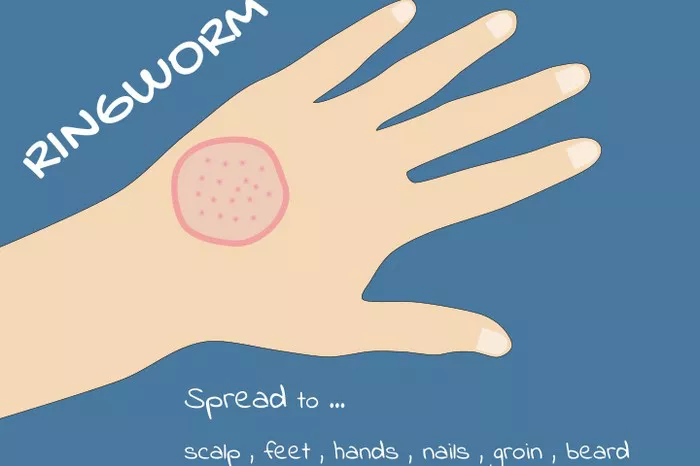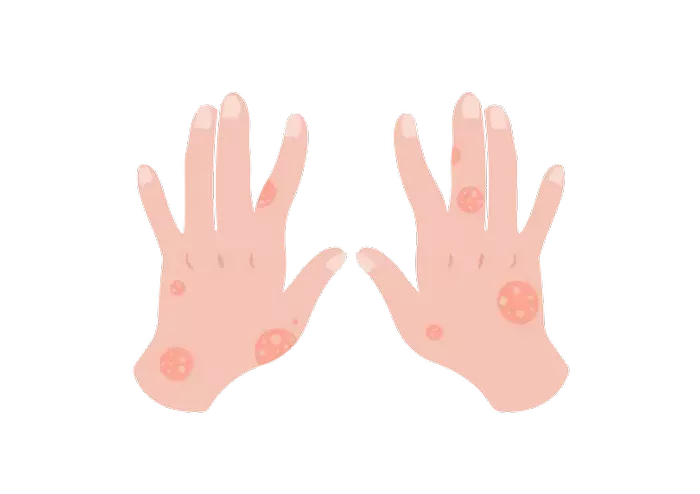Ringworm is a common fungal infection that can affect people of all ages. Despite its name, ringworm is not caused by worms. Instead, it is caused by a group of fungi called dermatophytes. These fungi can infect the skin, hair, and nails, leading to uncomfortable symptoms. In this article, we will explore what ringworms are, how they spread, the symptoms to watch out for, whether they are harmful, and how to treat and prevent them.
What Is Ringworm?
Ringworm, also known as tinea, is a fungal infection that affects the outer layers of the skin. The name “ringworm” comes from the appearance of the infection. It typically forms a circular or ring-like rash that has a clear center and raised, red edges. Despite its name, ringworm is not related to any type of worm. The infection is caused by dermatophytes, a type of fungus that thrives on keratin, a protein found in the skin, hair, and nails.
Ringworm is most commonly seen on the scalp, feet (athlete’s foot), groin (jock itch), and nails. However, it can also appear anywhere on the body. It is highly contagious and can spread through direct contact with an infected person, animal, or contaminated object.
How Does Ringworm Spread?
Ringworm is spread through contact with an infected person or animal. It can also spread through contact with objects and surfaces contaminated with the fungus. Some common ways ringworm spreads include:
Human-to-Human Contact: If you touch someone with ringworm or share personal items such as towels, combs, or clothing, you can become infected.
Animal-to-Human Contact: Ringworm can also be transmitted from animals to humans. Pets, especially cats and dogs, can carry the fungus and pass it on to humans through direct contact.
Contaminated Surfaces: The fungus can survive on surfaces like gym floors, showers, and clothing, which can lead to indirect transmission. Walking barefoot in public areas like pools and locker rooms increases your risk of contracting ringworm.
What Are the Symptoms of Ringworm?
The symptoms of ringworm can vary depending on where the infection occurs on the body. Common symptoms include:
Itchy Skin: One of the most common symptoms of ringworm is itching. The infection can cause the affected area to feel uncomfortable, and scratching can make the condition worse.
Circular Rash: The hallmark sign of ringworm is the appearance of a red, circular rash with raised edges. The rash often has a clear or scaly center, which gives it the characteristic “ring” shape.
Peeling or Cracking Skin: In some cases, the skin affected by ringworm may peel, crack, or blister. This can be painful, especially if the infection is on the feet or groin.
Hair Loss: If ringworm affects the scalp, it can cause patches of hair loss. The hair may become brittle and break easily.
Discoloration of the Nails: When ringworm affects the nails, it can cause them to become thick, discolored, or brittle.
Are Ringworms Dangerous?
In most cases, ringworm is not considered a serious or dangerous condition. However, it can cause discomfort and lead to complications if left untreated. Here are some factors to consider:
Spread of Infection: If left untreated, ringworm can spread to other areas of the body. The infection may worsen over time and cause more significant symptoms.
Secondary Infections: Scratching or picking at the rash can introduce bacteria into the skin, leading to a secondary bacterial infection. This can cause further irritation, swelling, and pain.
Impact on the Scalp: When ringworm affects the scalp, it can cause hair loss, which may be distressing for some people. Although hair usually grows back once the infection is treated, it may take some time.
Vulnerable Individuals: While ringworm is usually not dangerous for healthy individuals, people with weakened immune systems (such as those with HIV/AIDS or those undergoing chemotherapy) may be at a higher risk for more severe infections. In these cases, prompt medical attention is necessary.
How to Treat Ringworm?
Treating ringworm is typically straightforward, and most cases can be managed with antifungal medications. The treatment approach depends on the severity and location of the infection. Here are some common treatment options:
Topical Antifungal Creams: For mild cases of ringworm on the skin, over-the-counter antifungal creams, ointments, or powders are usually effective. These products contain active ingredients like clotrimazole, terbinafine, or miconazole. Apply the medication to the affected area as directed, usually for a couple of weeks, even if the symptoms improve sooner.
Oral Antifungal Medications: For more severe or widespread cases, or if ringworm affects the scalp or nails, a doctor may prescribe oral antifungal medications. These medications include terbinafine, itraconazole, or fluconazole. They work by targeting the fungus from within the body and are usually taken for several weeks.
Medicated Shampoos: If ringworm affects the scalp, a doctor may recommend antifungal shampoos that contain ingredients like ketoconazole or selenium sulfide. These shampoos can help reduce the spread of the fungus and control symptoms.
Self-Care Measures: In addition to using antifungal medications, there are several steps you can take to promote healing and prevent the infection from spreading:
Keep the affected area clean and dry.
Avoid scratching or picking at the rash.
Wash clothing, towels, and bedding regularly to prevent contamination.
Wear loose-fitting clothing to reduce friction on the affected area.
How to Prevent Ringworm?
Preventing ringworm is possible by taking some simple precautions, especially if you are at higher risk of infection. Here are some tips to help you avoid getting ringworm:
Practice Good Hygiene: Wash your hands regularly with soap and water, especially after touching animals or being in public places. Keep your skin clean and dry, as fungi thrive in warm, moist environments.
Avoid Sharing Personal Items: Do not share towels, combs, hats, or other personal items with others, as this can spread the fungus.
Protect Yourself in Public Areas: Wear flip-flops or sandals in public showers, swimming pools, and locker rooms to avoid coming into contact with contaminated surfaces.
Keep Pets Clean: If you have pets, make sure they are regularly checked for signs of ringworm and treated if necessary. If your pet has ringworm, avoid direct contact until the infection is cleared up.
Disinfect Surfaces: Regularly clean and disinfect surfaces that may come into contact with fungi, such as gym equipment, floors, and countertops.
Conclusion
Ringworm is a common but treatable fungal infection that can cause discomfort and skin irritation. While it is usually not dangerous, it is important to treat ringworm promptly to avoid complications and prevent its spread to others. If you notice symptoms of ringworm, such as a red, circular rash or itching, seek treatment early to prevent the infection from worsening. With the right antifungal treatments and preventive measures, you can manage and recover from ringworm effectively. Always remember to maintain good hygiene and take steps to protect yourself and others from this contagious infection.
Related topics:


























